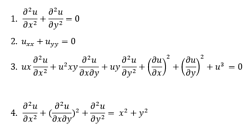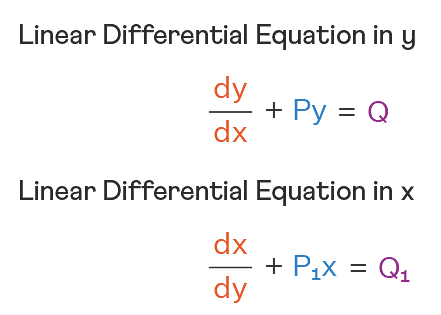As per the given figure, two plates A and B of thermal conductivity K and 2 K are joined together to form a compound plate. The thickness of plates are 4.0 cm and 2.5 cm, respectively and the area of cross-section is 120 cm2 for each plate. The equivalent thermal conductivity of the compound plate is \((1+\frac{5}{α})K,\) then the value of α will be ___.

As per the given figure, two plates A and B of thermal conductivity K and 2 K are joined together to form a compound plate. The thickness of plates are 4.0 cm and 2.5 cm, respectively and the area of cross-section is 120 cm2 for each plate. The equivalent thermal conductivity of the compound plate is \((1+\frac{5}{α})K,\) then the value of α will be ___.

Correct Answer: 21
Solution and Explanation
The correct answer is: 21
\(\frac{L_1}{K_1A_1}+\frac{L_1}{K_1A_1}=\frac{L_1+L_2}{K_{eff}A_eff}\)
\(⇒K_{eff}=\frac{13K}{10.5}=(1+\frac{5}{21})K\)
⇒ α = 21
Top Questions on thermal properties of matter
- A spherical shell of radius 1 m, made of a steel sheet of thickness 5 mm and completely filled with ice at $0^\circ$C is immersed in boiling water. The time taken for the ice to melt completely is (Thermal conductivity of steel = $45~\text{Wm}^{-1}\text{K}^{-1}$ and density of ice is $0.9~\text{g cm}^{-3}$)
- TS EAMCET - 2025
- Physics
- thermal properties of matter
- 10 g of ice at $-20^\circ$C is dropped into a calorimeter of water equivalent 20 g, containing 10 g of water at $20^\circ$C. At equilibrium, the mass of the ice in the mixture is
- TS EAMCET - 2025
- Physics
- thermal properties of matter
- A pendulum clock gains 6 s per day when the temperature is $296\ \mathrm{K}$ and gains 9 s per day when the temperature is $291\ \mathrm{K}$. The temperature at which the pendulum clock loses 12 s per day is:
- TS EAMCET - 2025
- Physics
- thermal properties of matter
- A metal plate of mass 50 g is heated to a temperature of $200^\circ\mathrm{C}$ and then immersed in 150 g of water at $20^\circ\mathrm{C}$. If the temperature of the water is $50^\circ\mathrm{C}$ at equilibrium, then the specific heat capacity of the metal is (specific heat capacity of water $=4200\ \mathrm{J\,kg^{-1}K^{-1}}$):
- TS EAMCET - 2025
- Physics
- thermal properties of matter
- An air bubble rises from the bottom to the top of a water tank in which the temperature of the water is uniform. The surface area of the bubble at the top of the tank is 125% more than its surface area at the bottom of the tank. If the atmospheric pressure is equal to the pressure of 10 m water column, then the depth of water in the tank is
- TS EAMCET - 2025
- Physics
- thermal properties of matter
Questions Asked in JEE Main exam
- The number of points of discontinuity of the function $ f(x) = \left\lfloor \frac{x^2}{2} \right\rfloor - \left\lfloor \sqrt{x} \right\rfloor, \quad x \in [0, 4], $ where $ \left\lfloor \cdot \right\rfloor $ denotes the greatest integer function, is:
- JEE Main - 2025
- Functions
- A lens of focal length 20 cm in air is made of glass with a refractive index of 1.6. What is its focal length when it is immersed in a liquid of refractive index 1.8?
- JEE Main - 2025
- Wave optics
- Two charges \( 7 \, \mu C \) and \( -4 \, \mu C \) are placed at \( (-7 \, \text{cm}, 0, 0) \) and \( (7 \, \text{cm}, 0, 0) \) respectively. Given, \( \epsilon_0 = 8.85 \times 10^{-12} \, \text{C}^2 \text{N}^{-1} \text{m}^{-2} \), the electrostatic potential energy of the charge configuration is:
- JEE Main - 2025
- Electrostatics and Potential Energy
- The area of the region enclosed by the curves \( y = x^2 - 4x + 4 \) and \( y^2 = 16 - 8x \) is:
- JEE Main - 2025
- Area between Two Curves
- The ratio of intensities of two coherent sources is 1:9. The ratio of the maximum to the minimum intensities is:
- JEE Main - 2025
- Wave optics
Concepts Used:
Types of Differential Equations
There are various types of Differential Equation, such as:
Ordinary Differential Equations:
Ordinary Differential Equations is an equation that indicates the relation of having one independent variable x, and one dependent variable y, along with some of its other derivatives.
\(F(\frac{dy}{dt},y,t) = 0\)
Partial Differential Equations:
A partial differential equation is a type, in which the equation carries many unknown variables with their partial derivatives.

Linear Differential Equations:
It is the linear polynomial equation in which derivatives of different variables exist. Linear Partial Differential Equation derivatives are partial and function is dependent on the variable.

Homogeneous Differential Equations:
When the degree of f(x,y) and g(x,y) is the same, it is known to be a homogeneous differential equation.
\(\frac{dy}{dx} = \frac{a_1x + b_1y + c_1}{a_2x + b_2y + c_2}\)
Read More: Differential Equations